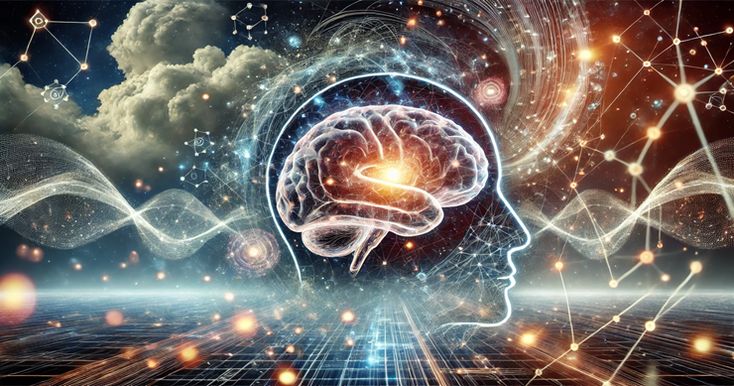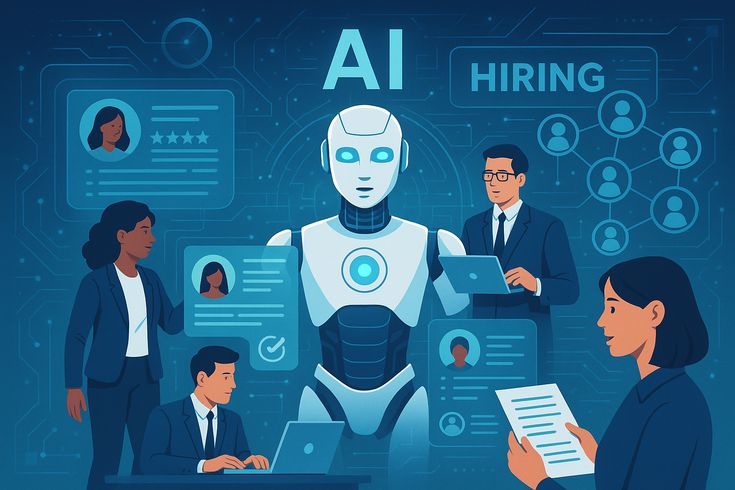1. Machine Learning Engineering

Machine Learning (ML) Engineering serves as the foundation of artificial intelligence, focusing on developing algorithms that enable systems to learn autonomously from data. Unlike traditional programming, ML doesn’t rely on explicit instructions for each task. Instead, it trains models to recognize patterns through supervised and unsupervised learning. Supervised learning leverages labeled data to make accurate predictions, while unsupervised learning identifies hidden structures in unlabeled datasets. ML engineers automate data preprocessing, feature extraction, and model optimization using frameworks like TensorFlow, PyTorch, and scikit-learn. They also perform hyperparameter tuning to improve model efficiency. Real-world applications include virtual assistants that recognize speech, email filters that detect spam, and financial systems that identify fraudulent transactions. ML’s scalability allows it to power predictive systems across industries, improving automation, precision, and user experiences. As AI grows, ML engineering remains one of its most dynamic and in-demand branches.
2. Deep Learning
Deep Learning (DL) is an advanced subset of machine learning that uses artificial neural networks inspired by the human brain. These networks consist of multiple layers that progressively extract higher-level features from raw data. DL models are particularly effective in processing complex inputs such as images, audio, and text. Architectures like Convolutional Neural Networks (CNNs) excel at image classification and recognition, while Recurrent Neural Networks (RNNs) handle sequential data like speech and natural language.
Thank you for reading this post, don't forget to subscribe!Transformer models such as GPT and BERT have further advanced AI’s ability to understand and generate human language. Deep learning applications include facial recognition, medical image analysis, and self-driving cars. Using powerful GPUs, models are trained efficiently to manage massive datasets. Techniques like transfer learning allow pre-trained models to adapt to new tasks quickly, improving efficiency. DL’s continual advancements are pushing AI toward human-level perception and reasoning.
3. Data Science and Analytics
Data Science integrates AI-driven algorithms with statistical techniques to extract valuable insights from vast datasets. This field focuses on collecting, cleaning, analyzing, and visualizing data to inform decision-making. AI enhances these processes by automating pattern recognition, anomaly detection, and predictive analysis. Data scientists use tools like Python, R, SQL, and machine learning frameworks to develop models that predict future trends or classify information efficiently. Visualization tools such as Tableau or Power BI help translate complex results into actionable business insights.
Industries like marketing, healthcare, and e-commerce rely on AI-powered analytics for customer segmentation, inventory management, and trend forecasting. The integration of AI in analytics has transformed businesses, allowing them to make data-backed strategic decisions. Advanced courses teach deep learning, feature engineering, and natural language processing to help professionals harness data effectively in a world driven by information.
4. Natural Language Processing (NLP)
Natural Language Processing empowers machines to understand, interpret, and generate human language. It combines AI with linguistics to build systems capable of meaningful interaction. Key topics in NLP include language modeling, machine translation, and sentiment analysis. Transformer-based models like BERT and GPT have revolutionized NLP by achieving deep contextual understanding. These models capture relationships between words and phrases, making responses more accurate and coherent.
Applications include chatbots, voice assistants, and automated translation systems. NLP also powers tools for summarizing documents, analyzing emotions in social media posts, and enabling real-time language conversion. Advanced NLP courses explore syntax, semantics, and pragmatic understanding, blending deep learning and linguistic rules. As industries automate communication through AI, NLP stands at the forefront of innovation, transforming how humans and computers exchange information across languages and platforms.
5. Computer Vision

Computer Vision (CV) focuses on enabling machines to interpret and analyze visual information from the world. Using advanced deep learning models, systems can recognize patterns, objects, and even emotions from images and videos. Convolutional Neural Networks (CNNs) and object detection algorithms like YOLO (You Only Look Once) form the backbone of modern CV applications. Tasks such as image classification, facial recognition, and scene segmentation rely heavily on these models.
Autonomous vehicles use CV for obstacle detection and navigation, while industries employ it for surveillance and quality inspection. Advanced topics include 3D vision, pose estimation, and real-time tracking. AI-powered CV has also made strides in healthcare, diagnosing diseases from medical scans. By combining computer vision with other AI fields like NLP and reinforcement learning, intelligent systems can perceive and interact with the world almost as effectively as humans.
6. Reinforcement Learning (RL)
Reinforcement Learning is a powerful AI method where systems learn optimal behavior through trial and error, guided by rewards or penalties. Unlike supervised learning, RL doesn’t rely on labeled data; instead, it evolves through environmental feedback. Algorithms such as Q-learning and Deep Reinforcement Learning (DRL) allow agents to make decisions and improve strategies over time. RL has been instrumental in mastering complex tasks like playing chess, Go, and StarCraft, outperforming human champions.
It’s also applied in robotics for autonomous control, in finance for portfolio optimization, and in transportation for adaptive traffic management. RL’s ability to adapt dynamically makes it ideal for uncertain and changing environments. Advanced RL research explores multi-agent learning, reward shaping, and policy gradients, enhancing real-world applicability. It represents the next leap toward truly intelligent autonomous systems capable of self-improvement.
7. MLOps (Machine Learning Operations)

MLOps bridges the gap between AI research and real-world application by focusing on scalable deployment and lifecycle management of machine learning models. It ensures that AI systems remain reliable, efficient, and continuously updated in production environments. MLOps combines principles of DevOps with data engineering and AI monitoring. Key components include model versioning, CI/CD pipelines, and automated retraining processes. Cloud platforms like AWS, Azure, and Google Cloud provide tools for managing these workflows.
Advanced MLOps practices also address model drift, explainability, and ethical considerations. By automating deployment and monitoring, MLOps allows organizations to turn experimental AI projects into stable, operational systems. As industries adopt AI solutions, MLOps professionals are in high demand for their expertise in building resilient and scalable AI ecosystems.
8. AI in Finance and FinTech
In the financial sector, AI enhances efficiency, accuracy, and security through intelligent automation. Machine learning algorithms detect anomalies in transaction patterns to prevent fraud in real-time. AI-driven chatbots and virtual assistants handle customer inquiries 24/7, reducing operational costs. In investment management, algorithmic trading systems analyze large datasets to forecast market movements and optimize portfolios. FinTech innovations like robo-advisors use AI to offer personalized investment recommendations tailored to individual goals and risk tolerance. Predictive analytics helps banks assess creditworthiness and manage risk.
Financial courses increasingly include AI modules covering ethical concerns and data-driven decision-making. The combination of AI and finance empowers institutions to respond swiftly to market changes and serve customers more efficiently. With advancements in deep learning and reinforcement learning, the financial world is transforming into a data-driven, intelligent ecosystem.
9. AI in Game Development
AI revolutionizes game development by creating immersive, adaptive, and dynamic virtual worlds. Game designers use AI to build non-player characters (NPCs) that learn from player behavior, making gameplay more engaging. Machine learning algorithms also assist in procedural content generation, allowing vast game environments to be created automatically. Reinforcement learning techniques enable NPCs to adapt over time, improving strategy and realism. AI analyzes player interactions to adjust difficulty levels and enhance storytelling. Integration with augmented reality (AR) and virtual reality (VR) has opened new dimensions of interactivity.
Developers studying this field learn about pathfinding algorithms, neural networks for animation, and AI ethics in gaming. Modern courses also explore AI-driven testing, predictive analytics, and creative generation tools. As gaming evolves, AI continues to shape its future, blending creativity and computation for lifelike experiences.
10. AI in Cybersecurity

Cybersecurity has been significantly strengthened by AI’s ability to detect and respond to threats autonomously. AI systems monitor network traffic, identify irregularities, and block malicious activities in real time. Machine learning models trained on massive security datasets can detect patterns that indicate potential intrusions or fraud. AI also enhances incident response, phishing detection, and malware classification. Advanced AI systems even predict attacks before they occur using anomaly detection and behavioral analysis. Cybersecurity professionals leverage AI-driven Security Information and Event Management (SIEM) tools for continuous monitoring.
Ethical AI frameworks ensure these systems operate responsibly and without bias. As cyber threats grow more sophisticated, AI’s adaptability and speed make it an essential defense mechanism. Courses in this field teach threat modeling, adversarial AI, and ethical hacking techniques. AI-driven cybersecurity ensures digital resilience in a hyper-connected world.
11. AI in Healthcare
AI is transforming healthcare by enhancing diagnosis, patient care, and medical research. Machine learning algorithms analyze medical images like X-rays and MRIs to detect diseases early with high accuracy. AI models assist in predicting patient outcomes, managing hospital resources, and personalizing treatment plans. Natural language processing enables AI to interpret clinical notes and assist in drug discovery. In genomics, AI accelerates the identification of disease-related patterns in DNA sequences. Robotic surgeries powered by AI improve precision and recovery times.
Predictive analytics also helps forecast disease outbreaks and optimize healthcare delivery. Ethical AI practices ensure data privacy and bias reduction in healthcare models. Courses in AI for healthcare combine data science, medical imaging, and bioinformatics. The integration of AI in medicine enhances both accessibility and accuracy, shaping the future of global health.
12. AI in Cloud Computing
Cloud computing integrates AI to achieve automation, optimization, and scalability. AI systems manage load balancing to distribute workloads evenly and prevent server crashes. They also optimize resource allocation—ensuring computing power, storage, and bandwidth are used efficiently. Predictive maintenance powered by AI anticipates system failures, minimizing downtime. Platforms like Google Cloud, AWS, and Microsoft Azure now embed AI to build scalable intelligent solutions.
AI-driven security tools identify vulnerabilities, manage threats, and enhance compliance. Furthermore, AI supports cost optimization by analyzing usage patterns and reducing unnecessary expenses. Advanced topics include hybrid-cloud and federated learning architectures that ensure data privacy while maintaining learning efficiency. AI in cloud computing is a must-learn area for infrastructure engineers aiming to design resilient, efficient, and secure cloud ecosystems across industries.
13. AI Ethics and Policy
As AI becomes pervasive, understanding its ethical implications is critical. AI Ethics and Policy focus on fairness, accountability, and transparency in AI development and deployment. This field ensures AI systems operate without bias, respect privacy, and maintain human oversight. Governance frameworks like GDPR and ISO AI standards guide ethical compliance globally. Courses in AI ethics cover topics such as explainable AI, algorithmic bias, and responsible innovation.
Ethical AI development requires collaboration between technologists, policymakers, and social scientists to balance innovation with public trust. AI policy also addresses data governance, sustainability, and equitable access to technology. By embedding ethical principles into design and regulation, AI can benefit society responsibly. As AI impacts law, employment, and human rights, expertise in ethics ensures technology serves humanity’s best interests.
14. Quantum Artificial Intelligence

Quantum Artificial Intelligence merges quantum computing and AI to solve problems beyond classical computation’s reach. Quantum algorithms process information exponentially faster using qubits that exist in multiple states simultaneously. This field explores how AI models can leverage quantum principles for optimization, simulation, and data analysis. Techniques like Quantum Approximate Optimization Algorithm (QAOA) and quantum neural networks are redefining computational intelligence.
Quantum AI holds potential in cryptography, materials science, and logistics, offering breakthroughs in speed and efficiency. Although still in early stages, research in this field is rapidly advancing. Professionals trained in both AI and quantum computing are becoming valuable assets in academic and industrial research. Quantum AI represents the frontier of computational intelligence, promising to transform industries through unprecedented processing power.
15. Future of AI Integration
The convergence of all these AI disciplines—ML, NLP, computer vision, reinforcement learning, and quantum AI—is shaping the next generation of intelligent automation. Integrated AI ecosystems can sense, interpret, and act with human-like reasoning. Cross-disciplinary advancements enable smarter healthcare, safer transportation, and personalized digital experiences. The rise of hybrid systems, where AI collaborates with humans, emphasizes augmented intelligence rather than replacement. As AI continues to evolve, interdisciplinary learning, ethics, and innovation will guide its sustainable growth. Future professionals equipped with multi-domain AI expertise will lead global transformation—bridging technology with human values. The fusion of AI with cloud computing, robotics, and ethics will define the future of automation, fostering an era of responsible and intelligent progress.



